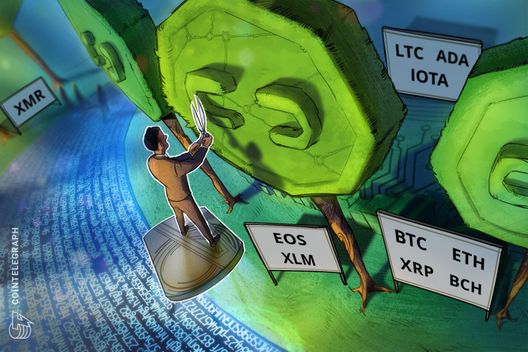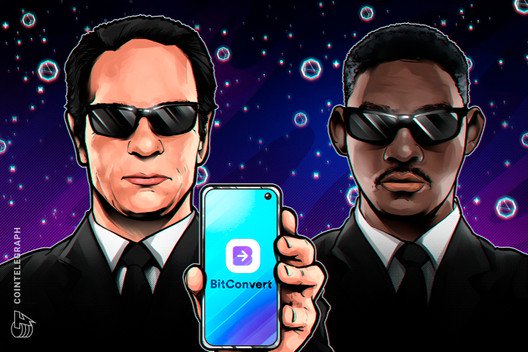Metaverse is a new frontier for earning passive income
When new technologies and platforms are created, there are incredible discovery phases in which economic activity eventually picks up and starts taking shape. The metaverse is arguably in that discovery phase, with many entrepreneurs finding ways to earn passive income on it.
As economic activity in the metaverse rises, new passive income opportunities are seemingly being created on a regular basis, as are opportunities to actively earn income. While what works and what doesn’t is still up for debate, there are some in the vanguard of metaverse passive income.
What is the metaverse?
Before digging into passive income opportunities in the metaverse, it’s first important to analyze what is actually is. The term “metaverse” has been one of the most popular buzzwords in the Web3 space over the last few months, while millions are moved in digital economies focusing on it.
The word “metaverse” comes from Neal Stephenson’s 1992 cyberpunk sci-fi novel Snow Crash. In the Web3 space, the term is used to describe a digital world where people actually own the assets within it.
The metaverse differs from past digital worlds, like those created in video games, through the use of nonfungible tokens (NFTs). These unique blockchain-based tokens can be freely traded by users but cannot be duplicated or copied. What can be done in the metaverse is still being explored, but so far, real businesses have been created within these metaverses.
Another defining characteristic of the metaverse is interoperability. Virtual worlds like that of popular videogame Roblox could be thought of as metaverses, but unlike the new, blockchain-based iterations, players don’t exercise control or ownership over their assets.
Various companies have been moving into the metaverse, with Walmart seemingly gearing up to enter the space, while fashion brands like Ralph Lauren and Gucci have signaled that virtual clothes could be a major growth area for them. Companies are entering the space as it grows rapidly and is expected to become an $800 billion industry within two years.
Given the potential size, earning passive income in the space could be a great opportunity. Taking advantage of passive income opportunities can be easy for those already deep into the metaverse, but how long each opportunity will allow entrepreneurs to earn isn’t clear.
Renting out metaverse land
One of the most well-known ways of earning passive income in the metaverse is by owning property in it and renting it out. Metaverse platforms like Decentraland and The Sandbox let users rent land for a fee to others.
Recent: Canada crypto regulation: Bitcoin ETFs, strict licensing and a digital dollar
There currently isn’t a lot of data on what type of earnings metaverse landlords can expect, as that information isn’t being widely shared. Nevertheless, it’s known to be an attractive market as companies look to host events on the metaverse.
Pavel Sinelnikov, co-founder and CEO of Ethereum layer-2 scaling solution Metis DAO, told Cointelegraph that metaverses aim to achieve “digital land ownership and the ability to buy, sell, and rent land and other virtual items,” adding:
“Metaverses create an abstraction of real-life, where there is a living virtual economy in the game that is not locked and restricted to the digital domain, but instead extends outside of it; these are real and valued assets, holding value outside of the digital realm.”
According to Sinelnikov, the economies seen within metaverses like Decenraland and The Sandbox impact the “greater and real-world DeFi [decentralized finance] ecosystem,” while allowing for more interoperability opportunities.
Leasing assets
Another way to earn passive income in the metaverse involves leasing out assets, as some users may not want to directly purchase expensive NFTs.
One well-known example of NFTs being leased to other users to earn passive income comes from the popular game Axie Infinity. The game is based on NFTs called on Axies that were, at one point, rather expensive as the game’s popularity exploded during the bull market.
In the game, Axies were needed to compete and earn rewards in the form of Smooth Love Potion (SLP) tokens. Players who could not afford Axies would receive them from so-called team managers in exchange for some of the SLP tokens they managed to earn. The managers were, in essence, earning passive income from their Axies as other players — called scholars — used them to earn rewards. The practice was so popular that some “scholars” in Venezuela were making a living off of leased Axies.
Other metaverse assets can be leased, depending on the platform. Sinelnikov commented that lending, renting and asset fractionalization are interactions that have already been formed on the metaverse, with the best part about them being that “no single provider can restrict the usage or control the market, since the assets belong to you and not to an individual provider.”
Secondary market royalties
Some NFT artists have earned extensive royalties through the secondary market as their creations are traded among collectors. The same type of interaction is possible in the metaverse.
Prakash Somosundram, co-founder and CEO of blockchain game launchpad Enjinstarter, told Cointelegraph that “any wearable creator can earn royalties when the assets they create are sold on the secondary market.”
John Burris, chief of strategy at metaverse app IMVU, told Cointelegraph that the metaverse is “filled with opportunities to earn,” stating that while some metaverse worlds are play-to-earn and others “host gig-like economies,” almost all of them offer item creation and sales:
“With blockchain and NFTs we’ve finally unlocked a true ownership and royalty model where royalties can and will continue to flow back to the original creator, providing well-deserved passive income as those items change hands.”
Per Burris, the metaverse “serves as a great way for people to make money no matter who they are, or where they’re from, in the real world.” The ability to create, own and sell goods, he said, opens up opportunities to people that they would not get otherwise.
Virtual games
Gaming is one of the metaverse’s largest use cases, with most metaverse worlds either being completely focused on gaming or having a large portion of users focusing on it. Some involve gambling, while others generate their revenue in other ways.
Decentral Games’ ICE Poker virtual casino is one of the most popular metaverse gambling operations out there and since it’s based in the metaverse, a lot of the costs traditional casinos have aren’t present.
Other games, however, aren’t related to gambling at all. Some generate revenue through asset sales, secondary market royalties or donations. Roderik van der Graff, the founder of global investment firm Lemniscap, told Cointelegraph that one of the firm’s portfolio companies has launched a tower defense game to generate revenue through the metaverse.
The game is called Spark Defense and allows users to “monetize their land and complete quests to collect, earn and own NFTs which they can use across the game,” van der Graff said.
Advertising
Our final way to make passive income in the metaverse is through advertisements. Setting up large billboards in popular areas can draw in advertisers looking to get the crowd’s attention to sell their products or services, whether these are in the metaverse or outside of it.
Finding advertisers for these billboards may mean the income isn’t completely passive, as after a campaign ends, an advertiser may lose interest and the billboard owner may have to start looking for someone else to rent.
In fact, most of the options above are likely to require some involvement from the entrepreneur. Then again, true passive income doesn’t really exist, as even the most passive investments have to be monitored from time to time.
Is passive income in the metaverse worth chasing?
If generated income isn’t entirely passive, some may consider it not worth chasing, given the drawbacks. According to Burris, downsides include engaging in speculation and dealing with the volatility of the cryptocurrency space, as most transactions are conducted in either NFTs or crypto tokens:
“It’s important users and creators looking to create income in the metaverse examine the platforms and metaverses they use, and look at the product as a whole. Is the team experienced? Is the metaverse active? Can it sustain itself through economic downturns?”
Somosundram said that the sustainability of an income stream “depends on the success of the specific metaverse and/or game where you generate your passive income,” which may mean often moving on to another venture.
It’s also worth pointing out that entrepreneurs may end up betting on a metaverse world that is later on abandoned, making their investment worthless as every passive income opportunity in the metaverse relies on heavy traffic.
On the bright side, Somosundram said that passive income from the metaverse is a “great means of diversification along with traditional financial instruments,” and there can be a rapidly expanding number of opportunities out there as the metaverse industry grows.
As exact figures aren’t widely shared, it’s up to entrepreneurs whether they want to bet on the metaverse and start building their income streams on it or whether they prefer to focus their attention elsewhere. Those who risk making it in the metaverse may have to innovate to stand out, however.
Making it in the digital world
While renting property or a digital billboard won’t require significant innovation, some of the more prolific earners are taking different approaches. Somosundram told Cointelegraph the story of a Singapore-based entrepreneur that created a GameFi guild that built up a pool of assets to lease for a fee.
In another potential example, he pointed to tattoo artists using a service to “mint wearable tattoo art that generates passive income from the secondary market royalties.”
Recent: After FTX: Defi can go mainstream if it overcomes its flaws
Burris noted that on the platform he represents, there are “over 200,000 active creators, making over 350,000 new items for sale every month.” He stated:
“As more and more people spend their time in virtual worlds, and begin looking toward it as a way to earn a living, it’s important to have both passive and active income opportunities — just like in the real world.”
Whether entrepreneurs want to move forward with passive income ideas for the metaverse, it’s worth pointing out that there are no guarantees that the time or money invested will generate returns, as the space is constantly evolving.
Economic activity in the metaverse is still at an embryonic stage, as many are still figuring things out. As the metaverse evolves, new opportunities will likely present themselves the same way they’re presenting themselves in the broader cryptocurrency space.









